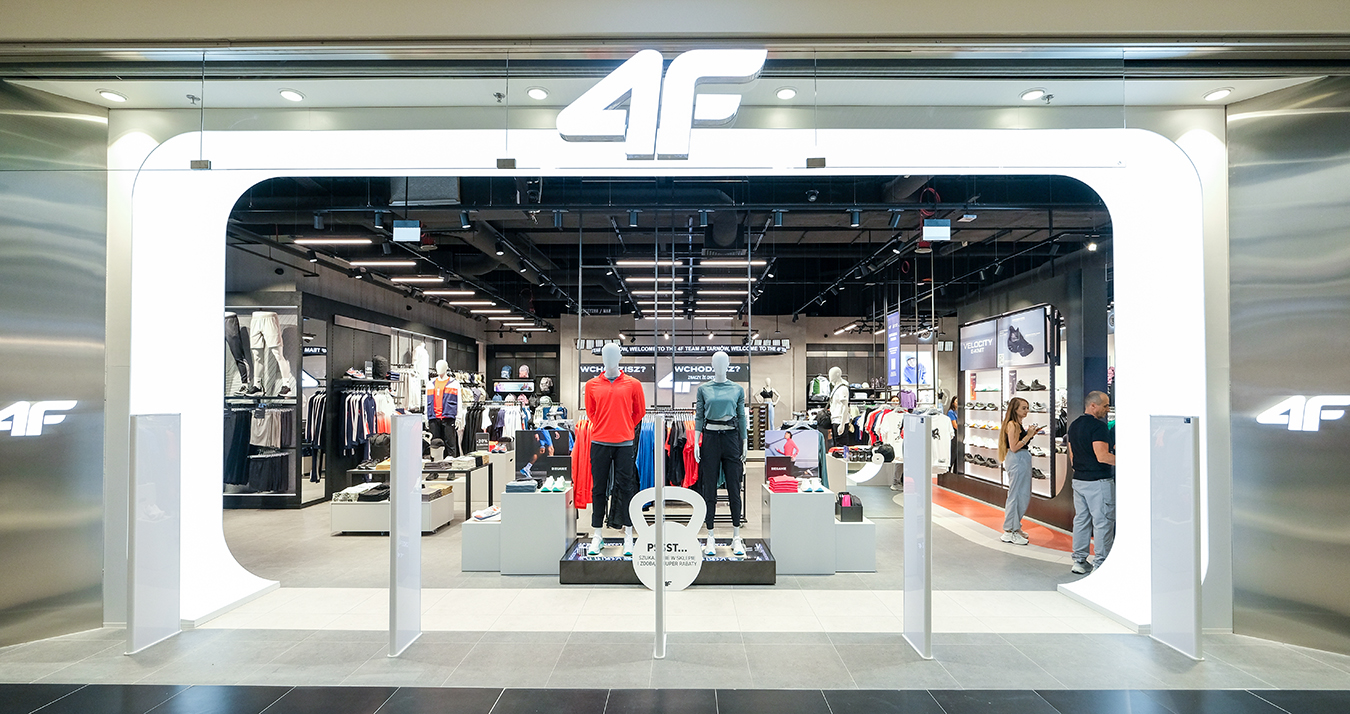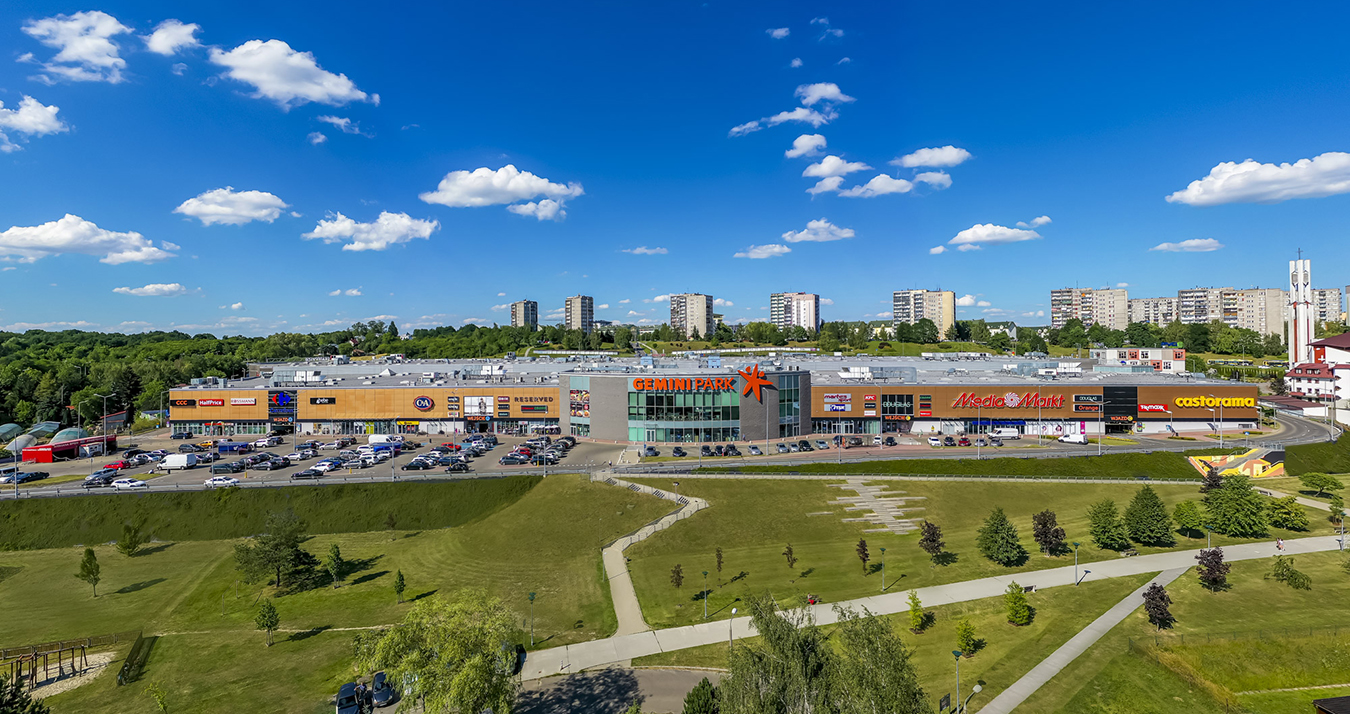

● Understanding the customer and their needs is the most important foundation of a shopping center’s operations today. Five generations of consumers mean five different sets of needs and expectations.
● Today, a shopping center manager is a “curator” of the offer. The active selection of tenants – including local partners – has a real impact on a center’s attractiveness.
● A shopping center is part of the local ecosystem, not just a place for shopping. It should evoke emotions and not shy away from difficult topics. It must live and breathe what its customers do – Anna Malcharek, Managing Director, Gemini Holding.
● Gemini Holding’s portfolio includes three properties: Gemini Park Bielsko-Biała, Gemini Park Tarnów, and Gemini Park Tychy.
Gemini’s portfolio includes legacy shopping centers that continue to perform well despite their age. Do you have a formula for staying competitive and still meeting customer needs?
Anna Malcharek: The most important thing is to know, understand, and listen to your customer. That’s the starting point in today’s retail landscape. The market structure clearly shows that we’re dealing with five distinct consumer generations, each with a different approach to shopping. From baby boomers, now in their seventies, who grew up entirely outside the digital world; to Generation X, those in their 40s and 50s raised during Poland’s political and economic transformation; to millennials (Generation Y), who were digitally native from the beginning. Then there’s Generation Z, fully immersed in the online world, and the emerging Generation Alpha. Each of these groups has different needs, experiences, and expectations – and it’s our job to understand and respond to them. Crucially, we must do this locally, not with a one-size-fits-all national approach.
So, is the era of universal offers over?
Absolutely. The key today is individualization and personalization. Customers no longer want the “everything for everyone” model. They want to feel that something was created for them, with them in mind. And for the first time in the history of shopping centers in Poland, we’re seeing such high generational diversity among visitors. Shopping centers are responding – becoming more accessible, opening up communication, and genuinely addressing the needs of different generational groups.
But how can an owner or manager influence the offer if it’s ultimately the tenants who decide what to provide?
That’s true, but as managers, we have a real impact through tenant selection. We make sure our tenants can adapt to changing conditions – sometimes we recommend refurbishing a unit, other times changing the format or expanding the space.
In addition to well-known chains that appeal to broad audiences, we actively seek local retail partners – businesses that are well-known in the region, close to the local community, and eager to grow within our centers. Their presence is particularly important for older customers, who appreciate local identity and social ties.
Local tenants often fear long-term contracts…
That’s why we offer flexible solutions like pop-up stores or short-term leases, which allow both sides to test the collaboration. We also organize local product fairs — these always attract customers and help strengthen the center’s local character.
Does engaging with local issues really deliver measurable results?
Absolutely. We organize community initiatives like blood donation drives, plant swaps for recycling, or partnerships with foundations – such as with Świetlikowo in Bielsko-Biała, where we provided space for a second-hand store run by a children’s hospice. We’re not afraid of difficult topics – quite the opposite. We believe they not only should be addressed, but must be. A shopping center becomes more than a place to shop – it becomes a space for dialogue and social engagement. With tens of thousands of people visiting us daily, we have a real opportunity to spark meaningful conversations. And when we do, we see the impact – it resonates, builds relationships, and is genuinely appreciated.
These kinds of initiatives spark emotion – and emotion builds a relationship with a place. A shopping center becomes part of the local ecosystem, not just a shopping destination – Anna Malcharek
Do such initiatives truly engage all generations?
Not every initiative will reach everyone. That’s why we adapt our communication channels and formats. Baby boomers and Gen X prefer Facebook and print – for them, we organize health and wellness campaigns. For Gen Z, we need other channels and more experiential, multimedia formats. For this group, we created the Science Point LAB – an interactive science center inside Gemini Park Bielsko-Biała, with escape rooms, exhibitions, and hands-on workshops, all designed to encourage children to explore the world through experience. We’ve run the project three times, in cooperation with the University of Bielsko-Biała (providing content expertise) and the Polish Ministry of Science and Higher Education (providing funding). Across all editions, nearly PLN 850,000 was invested, and the initiative attracted almost 100,000 children. These are real emotional experiences – and emotions build lasting connections.
So today, it’s not glass facades or high-tech features that matter most, but relationships and emotions?
Exactly. Modernity and functionality are still important, but today’s customers come when they have a reason – when they feel a bond, and when they experience something meaningful, personally, socially, and locally.
Under one roof – beyond the “soft” elements – we offer a wide mix: services, entertainment, fashion, DIY. All of these elements form a cohesive whole.
Are these now the real “reason to be” for a shopping center?
Yes. This diversity – in services, retail, dining, and entertainment – is what makes shopping centers attractive. Their strength lies in combining many functions in one place, creating a space that meets a wide variety of needs.
A shopping center today is a modern-day agora – a meeting place for people: customers and retailers, and customers among themselves. It’s a space of dynamic exchange – of experiences, emotions, and ideas – within a single, stable location. The center itself stays the same, but everything around it evolves. Our job is to adapt, to inspire change, and to respond to emerging needs. Because at its core, it’s still the same agora.
But competition is growing. Retail parks are expanding fast, and shopping centers are sometimes said to be a dying format…
That narrative oversimplifies reality. Let me refer to the Huff model, which measures attractiveness using two elements: the scale of the facility and its gravitational pull – how far people are willing to travel. That gravitational pull is what characterizes shopping centers. Retail parks don’t generate comparable reach because their offer is limited and serves different needs.
They’re not competitors – they’re different products, fulfilling different roles in different locations for different consumers – Anna Malcharek.
So what’s the relationship between offline and online? Does offline still drive online – or is it the other way around?
As I mentioned earlier, people seek human connection, and shopping centers – with their complete experience – are a powerful offline driver of online engagement. Studies from the U.S. confirm this. According to the latest ICSC report, opening a brick-and-mortar store increases online sales by nearly 7%, while closing one causes a drop of up to 11%. Basket size also increases after a store opens. Interestingly, even Gen Z, raised with technology, shows strong affection for in-person shopping. They shop in physical stores more frequently than millennials and Gen X – and at a similar rate as baby boomers. So yes – offline fuels online, not the other way around. And that hybrid experience matters – for all generations.
Do you see the same trend in your centers?
Very clearly. The data supports it. According to PRCH and GfK, shopping centers in Poland account for over 40% of all offline retail. There are around 40,000 stores in over 600 shopping centers. By comparison, there are about 60,000 online stores, but they generate only 8.5% of total retail volume. The difference is significant. Online is a complement, not a substitute. And both channels work together, creating synergy that delivers a full range of solutions tailored to the customer. It’s the customer who decides, and we – as an ecosystem – respond.
Much is being said about shopping center modernization. Is that the main direction of development?
Modernization isn’t a trend – it’s part of responsible center management. Just like homes need renovations, shopping centers require upgrades and innovation, especially eco-friendly solutions. At Gemini Park Tarnów, for example, we replaced traditional lighting with energy-efficient LEDs, which reduced energy use and earned us white certificates for energy efficiency. We also update our HVAC control algorithms to improve comfort and energy savings. We invest in green technologies, train staff, and maintain environmental certifications. All of this is part of our broader sustainability strategy, reflecting both operational goals and global ESG trends.
And what about your tenants? Are you seeing new directions there?
Yes, especially in services. Not just government offices, though those are popular, but a broader range of services. People want everything in one place: dry cleaning, postal services, doctors, etc. Recent research by Inquiry Agency confirms this: 89% of visitors use restaurants and cafés, 75% go to cinemas and entertainment, 57% use services like hair salons and postal outlets, 33% value the presence of children’s play areas. Convenience and time-saving are key – and shopping centers meet that need perfectly.
What other trends will shape the future of shopping centers?
We’ll see even closer collaboration between landlords and tenants. Also, continued cost optimization through eco-solutions and ESG compliance. These aren’t just internal priorities – they’re driven by EU regulations, investor expectations, and growing consumer awareness. People increasingly choose brands and places that follow sustainable principles. Customers want to know the centers they visit are responsible – environmentally, socially, and ethically. This brings us back to emotions and connection. The ability to respond – socially, technologically, and ecologically – will define which shopping centers thrive in the years ahead.


